If you are looking for the iPhone release order because you want to go through the entire history of iPhones, then you are on the right page as we have listed down all the iPhones released by Apple so far, starting from the very first iPhone all the way to the latest!
On January 9, 2007, Steve Jobs unveiled the revolutionary iPhone to the masses. It was a historic day not just for Apple but for the entire smartphone industry. Apple’s iPhone was the first modern smartphone that ended up having a significant impact on major industries. Fast forward to 2022, iPhone is responsible for around 50% of Apple’s revenue.
Apple is now gearing up to launch its next generation of iPhones dubbed iPhone 14, later this year. While it’s still a few months away, we decided to do a round-up of all the iPhones that Apple has brought to the market thus far. Here’s a list of every iPhone from 2007 to 2022 released in chronological order.
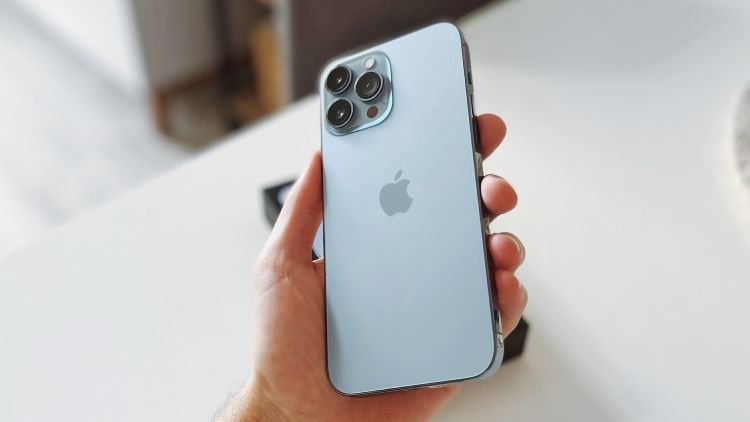
Every iPhone Release in Chronological Order:
| iPhone Model | Year | Release Date |
| Apple iPhone | 2007 | June 29 |
| iPhone 3G | 2008 | July 11 |
| iPhone 3GS | 2009 | June 19 |
| iPhone 4 | 2010 | June 24 |
| iPhone 4S | 2011 | October 14 |
| iPhone 5 | 2012 | September 21 |
| iPhone 5C/5S | 2013 | September 20 |
| iPhone 6/6 Plus | 2014 | September 19 |
| iPhone 6S/6S Plus | 2015 | September 25 |
| iPhone SE | 2016 | March 31 |
| iPhone 7/7 Plus | 2016 | September 16 |
| iPhone 8/8 Plus | 2017 | September 22 |
| iPhone X | 2017 | November 3 |
| iPhone XS/XS Max | 2018 | September 21 |
| iPhone XR | 2018 | October 26 |
| iPhone 11/11 Pro/11 Pro Max | 2019 | September 20 |
| iPhone SE (2nd) | 2020 | April 24 |
| iPhone 12/12 Pro | 2020 | October 23 |
| iPhone 12 Mini/12 Pro Max | 2020 | November 13 |
| iPhone 13/13 Mini/13 Pro/13 Pro Max | 2021 | September 24 |
| iPhone SE (3rd) | 2022 | March 18 |
Apple iPhone (June 29, 2007)
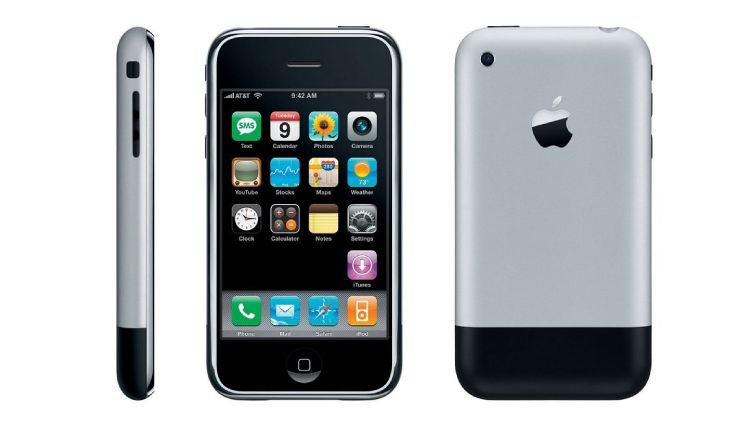
- Price: $499
- iOS Version: 1.0
As mentioned earlier, Apple iPhone was a revolutionary product that ended up putting a dent in the universe. When the definition of a smartphone was nothing but a flip form factor with an on-device qwerty keyboard, Apple brought a big touch screen with an on-screen keyboard. Not only that, iPhone was the first phone that allowed users to listen to music right from the phone.
Apple iPhone had an iTunes WiFi music store allowing users to download favorite music using the internet. The product revolutionized the entire digital music industry. It was also the first phone with real-time maps and a fully-working web browser. The ability to check all your mails and reply to them right from the phone was also a turning point.
Here are the key features of the original iPhone:
- Display: 3.5-inch TFT touchscreen, 320×480 pixels
- Camera: 2MP
- Internals: up to 128MB RAM, up to 16GB storage
- Processor: Samsung 32-bit RISC ARM
- iPod integration
- iTunes WiFi music store
- Mobile Safari web browser
- Google Maps
- Multitouch keyboard
All these features and hardware might sound retro or unimpressive, but it was enough to shape the entire smartphone industry back in 2007.
Apple iPhone 3G (July 11, 2008)
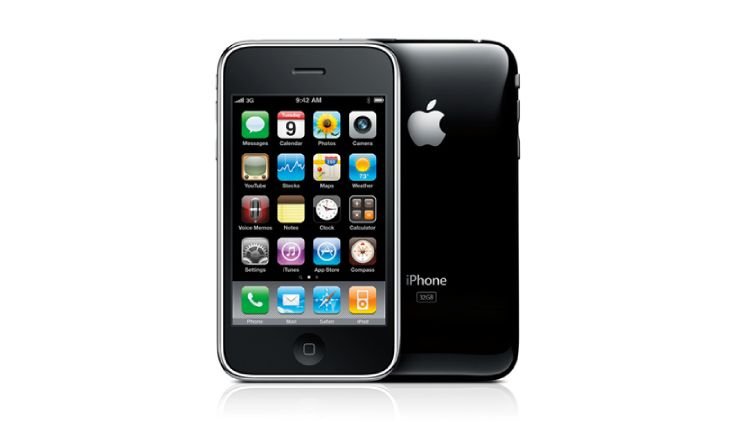
- Price: $599
- iOS Version: 2.0
After the immense success of the original iPhone, Apple launched a new, improved version just a year later. The product was dubbed iPhone 3G, and as the name suggests, the key feature was 3G connectivity. Of course, iPhone 3G was not a true successor but merely an improved version with slight differences.
Everyone was looking for an iPhone with faster internet speeds and better storage solutions, which is what iPhone 3G was all about. Of course, there were some unique additions to this variant as well. Apple introduced App Store and third-party apps for the very first time. We saw the addition of GPS navigation, Microsoft Exchange support, and more.
Here are the things that iPhone 3G introduced to the segment:
- App Store & 3rd party apps
- GPS navigation
- Microsoft Exchange support
- Scientific calculator
- MobileMe
Apple iPhone 3GS (June 19, 2009)
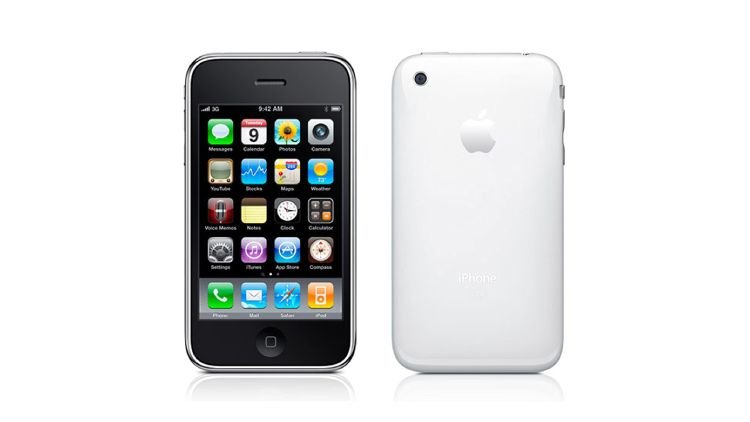
- Price: $599
- iOS Version: 3.0
While the previous iteration focused more on connectivity, it was time for Apple to improve its overall performance. So, iPhone 3GS was launched, where ‘S’ stands for Speed.
The company claimed a two-fold increase in the overall performance with this new iteration. Not just performance, we saw improvements in the camera department as well.
All these improvements make sense as the introduction of the App Store opened up doors for multiple third-party apps. It made sense to improve the storage and memory to accommodate the increased demand for app downloads. Of course, there were some software improvements as well.
Here are the new software features introduced with iPhone 3GS:
- Processor: 600 MHz ARM Cortex A8
- Camera: 3.15MP, 480p video
- Internal: up to 256MB RAM, up to 32GB storage
- Camcorder
- MMS
- Spotlight Search
- Voice control
- Copy, cut, and paste
Apple iPhone 4 (June 24, 2010)

- Price: $599
- iOS Version: 4.0
The iPhone 4 release date was June 24, 2010!
So far, Apple was just introducing a new variant with few improvements built on the foundation of the original iPhone. It was time for the company to spice things up and bring a real successor to the iPhone with some solid improvements. With the iPhone 4, things start to look interesting and move toward today’s smartphones.
Apple iPhone 4 was the company’s first smartphone to use the homegrown chipset. It was also the first iPhone to have a retina display. While selfies were not quite popular back then, Apple still decided to put a front-facing camera on its next-gen smartphone. Not just hardware, iPhone 4 also brought multitasking capabilities with its software resulting in a much more powerful user experience.
To sum up, here are the key features of the Apple iPhone 4:
- Display: 3.5-inch IPS LCD panel, 640×960 pixels
- Main camera: 5MP, 720p @ 30fps
- Selfie camera: VGA, 480 @ 30fps, Facetime over WiFi
- Processor: Apple A4 (45nm)
- Internals: up to 512MB RAM, up to 32GB storage
- Facetime
- HD Recording
- Multitasking
- Folders
- Game center
Apple iPhone 4S (October 14, 2011)

- Price: $649
- iOS Version: 5.0
With the iPhone 4S, Apple made a naming trend for its future iPhones. We would now see multiple S moniker devices throughout the timeline. Furthermore, this was the first time the sales figures took a significant dip for the company. It made sense considering these ‘S’ versions were nothing but just a minor upgrade over the previous one.
iPhone 4S was targeting consumers that were looking for a better camera phone. As expected, Apple also added a new storage variant having a whopping 64GB internal capacity. The key highlight of the iPhone 4S was the addition of a virtual assistant known as Siri. It received significant hype in the market thanks to this very feature alone.
There were some new additions to the software that would later turn out to be some of the classic iPhone apps.
Here’s what the iPhone 4S brings to the table:
- Main camera: 8MP, 1080p @ 30fps
- Selfie camera: VGA, 480 @ 30fps, Facetime over wifi & 3G
- Internals: up to 512MB RAM, up to 64GB storage
- Siri
- iMessage
- iCloud
- iTunes WiFi sync
- Newsstand
Apple iPhone 5 (September 21, 2012)

- Price: $649
- iOS Version: 6.0
The iPhone 5 release date was September 21, 2012!
Apple iPhone 5 was not a major improvement over the predecessor if we’re being honest. But, it did bring some much-awaited changes to the market. For instance, Apple finally decided to increase the screen size from 3.5-inch to 4-inch. So far, all the previous iPhones had the same small 3.5-inch touchscreen panel.
We also saw Apple moving to gigabytes for internal memory for the first time. iPhone 5 also left behind the old 3G days and ended up having LTE connectivity support. In fact, “Internet Everywhere” was the tagline behind this smartphone. At this moment, Apple also decided to bring its own iteration of maps. Little did it know that Google would dominate that particular segment.
These are some worth mentioning software features that were a part of the iPhone 5 release:
- Display: 4.0-inch IPS LCD panel, 640×1136 pixels
- Selfie camera: 1.2MP, 480 @ 30fps, Facetime over 3G & LTE
- Processor: Apple A6 (32nm)
- Internals: up to 1GB RAM, up to 64GB storage
- Apple Maps
- Passbook
- Facetime over 3G & LTE
- Panoramic photos
- Photo sharing
Apple iPhone 5C & 5S (September 20, 2013)

- Price: $549 & $649 respectively
- iOS Version: 7.0
This was the first time Apple introduced a cheaper alternative to its then-popular iPhones. As you might have guessed, we’re talking about the iPhone 5C. The iPhone 5C was cheaper because of the plastic build quality. To make things a bit interesting, the company also introduced some delightful color options.
iPhone 5S, on the other hand, had some good things going for itself. It was the first iPhone to have the infamous Touch ID support. It was also treated with an M7 Motion coprocessor, opening up some insane possibilities. iPhone 5S also got dual flash and slow motion video recording capabilities.
Since there was not much going on for iPhone 5C, let’s talk about the features of the iPhone 5S instead.
- Main camera: 8MP, 1080p @ 30fps, dual-LED dual-tone flash
- Processor: Apple A7 (28nm
- Biometrics: fingerprint sensor on the front
- Fingerprint Touch ID
- Airdrop
- Control Center
- Multitasking upgrades
- FaceTime Audio
With these hardware and software improvements, Apple iPhone 5S became one of the best-selling iPhones and was there to stay relevant for quite some time.
Apple iPhone 6 & 6 Plus (September 19, 2014)
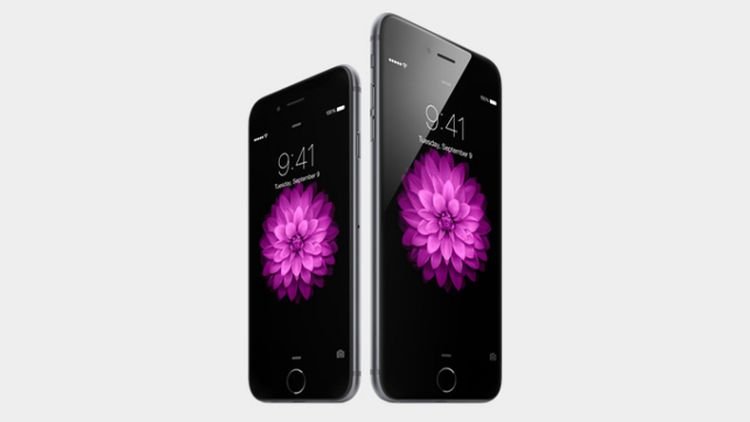
- Price: $649 & $749 respectively
- iOS Version: 8.0
The iPhone 6 release date was September 19, 2014!
While things looked good for Apple iPhones, the naming convention and the distinction between devices became confusing. iPhone 6 was similar to the iPhone 5S in terms of features and hardware. The only difference was the large screen. To top things off, Apple introduced an even larger smartphone dubbed iPhone 6 Plus.
There were some small other noticeable changes, such as the 128GB storage option and HD Retina display. Even though there was nothing much going for the iPhone 6 series, it still became a best-selling and pretty popular lineup.
Some software features that shared the limelight were:
- Display: 4.6-inch IPS LCD panel, 750×1334 pixels
- Processor: Apple A8 (20nm)
- Internals: up to 1GB RAM, up to 128GB storage
- Apple Pay
- Health app
- Family Sharing
- iCloud drive
Apple iPhone 6S & 6S Plus (September 25, 2015)
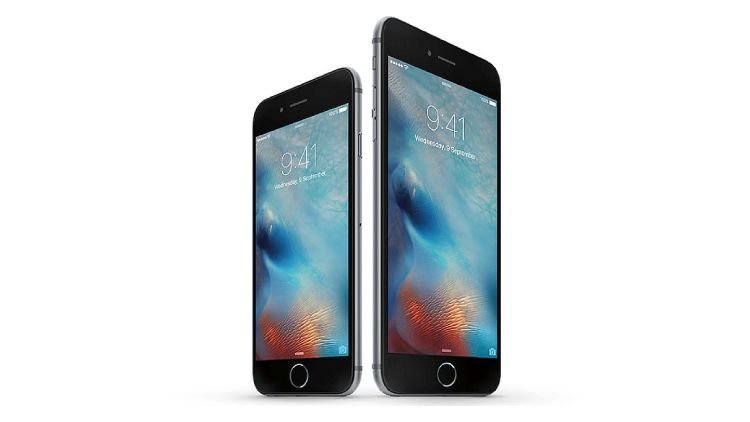
- Price: $649 & $749 respectively
- iOS Version: 9.0.1
The iPhone 6S release date was September 25, 2015!
The tech consumer market expected some big improvements from the next-gen iPhone 6S. Well, Apple managed to deliver to the expectations. It brought some significant internal changes while the design remained pretty much the same. With the iPhone 6S, we saw the camera capabilities make a substantial leap thanks to introducing a 12MP sensor.
Apple even increased the RAM from 1GB to 2GB for a better and smoother user experience. But, many users reported the bending of Apple devices. To prevent that, we saw the addition of 7000 series aluminum in this lineup. Another solid introduction was 3D Touch which changed the whole user experience.
To sum up, here’s what the iPhone 6s series brought to the market:
- Display: 4.7-inch IPS LCD, 750×1334 pixels, 3D Touch
- Processor: Apple A9 (14nm)
- Main camera: 12MP, 720p @240fps
- Selfie camera: 5MP, face detection, HDR, panorama, 720p@30fps
- 3D Touch
- Nightshift
- CarPlay
- Low Power Mode
- Improved Notes app
Apple iPhone SE (March 31, 2016)

- Price: $399
- iOS Version: 9.3
The very first iPhone SE release date was March 31, 2016!
It was the first time Apple launched three devices in a single year. We saw the affordable iPhone SE device launching in the month of May, while the iPhone 7 lineup was introduced later in the same year. iPhone SE was a rebranded iPhone 6 with a smaller footprint to make it cheap and affordable. It was a pretty solid device but didn’t sell much compared to the other iPhones.
Apple iPhone 7 & 7 Plus (September 16, 2016)

- Price: $649 & $749 respectively
- iOS Version: 10.0.1
The iPhone 7 release date was September 16, 2016!
Apple iPhone 7 series had a lot going for it compared to the iPhone SE launched the same year. First up, the base variant came with 32GB storage instead of a mere 16GB. We saw the addition of dual rear cameras, which is something all the other smartphone companies ended up going with later. With two cameras to use, iPhone 7 was the best camera phone back then.
It was also the first time Apple removed a feature, i.e., the almighty headphone jack.
- Processor: Apple A10 Fusion (16nm)
- Main camera: 12MP+12MP dual sensor, quad-led dual-tone flash, 2x optical zoom
- Selfie camera: 7MP, 1080p@30fps
- Removal of 3.5mm headphone jack
- Improved Apple Maps
- Delete built-in apps
- Home app
- iMessage Apps
- Improved lock screen
Apple iPhone 8 & 8 Plus (September 22, 2017)
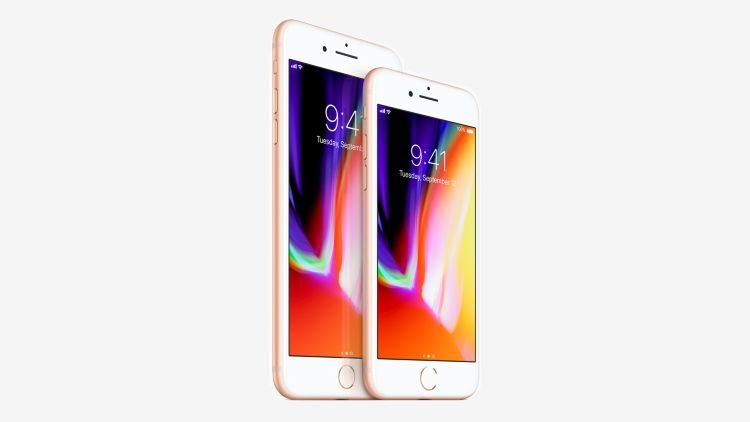
- Price: $799 & $999 respectively
- iOS Version: 11.0
The iPhone 8 release date was September 22, 2017!
Apple iPhone 8 series might be the company’s only series that no one asked for. iPhone 8 brought nothing major to the table. The only key addition to the series was the wireless charging capabilities – a reason why no one wanted to upgrade from iPhone 7 to iPhone 8.
Apple iPhone X (November 3, 2017)

- Price: $699
- iOS Version: 11.0.1
The iPhone X release date was November 3, 2017!
Further down the road, Apple ended up releasing its new project called iPhone X. Apple iPhone X was the smartphone ready to create a new status quo. It brought a unique design with a notch that everyone at first hated but then eventually accepted. The front of the iPhone X had very thin bezels with no home button giving you more real estate.
Since there was no home button, Apple introduced Face ID as an alternative way of biometrics.
Here is a quick summary of what the iPhone X brought to the table:
- Display: 5.8-inch Super Retina OLED, 1125×2436 pixels, HDR10, Dolby Vision
- Processor: Apple A11 Bionic (10nm)
- Internals: up to 3GB RAM, up to 256GB storage
- Main camera: 12MP+12MP dual sensor
- Selfie camera: 7MP+SL 3D dual sensor
- Biometrics: Face ID
- Other features: fast charging, wireless charging, better battery
- Siri translations
- Photo compression
- Animoji
- Files app
- Custom control center
Apple iPhone XS & XS Max (September 21, 2018)
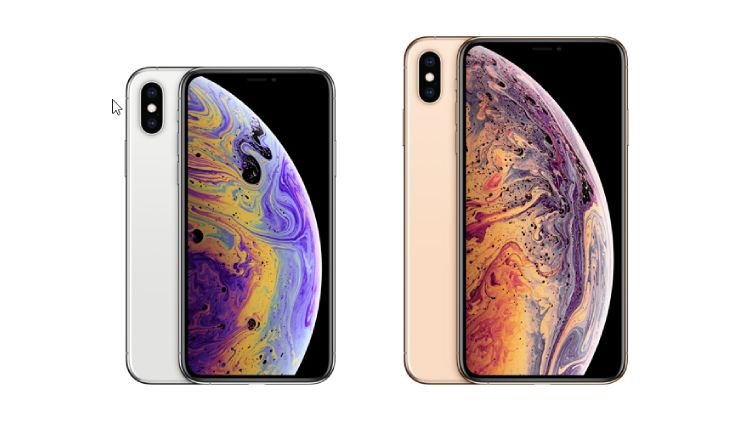
- Price: $999 & $1099 respectively
- iOS Version: 12.0
The iPhone XS release date was September 21, 2018!
With the iPhone XS series, Apple decided to bring even larger smartphones reaching up to 6.5-inches display. And the incremental upgrade in the processor brought even better performance.
We saw improved internals with higher RAM and storage. Sadly, nothing changed when it came to cameras. The main downside of the iPhone X was the poor battery backup, which Apple improved with this new lineup.
- Display: up to 6.5-inch Super Retina OLED, 1242×2688 pixels, HDR10, Dolby Vision
- Processor: Apple A12 Bionic (7nm)
- Screen Time
- Siri Shortcuts
- Group FaceTime
- Password Management
- Memoji
Apple iPhone XR (October 26, 2018)

- Price: $749
- iOS Version: 12.0
The iPhone XR release date was October 26, 2018!
Apple decided to bring the cheapest alternative once again, named iPhone XR. Apple incorporated a plastic back, a single camera sensor, toned-down display resolution, and more to make things more affordable. Unlike other cheaper options, iPhone XR ended up selling quite well. It even sells to this date quite heavily. It has become a tremendous entry-level smartphone for someone who’s just entering into Apple ecosystem.
Apple iPhone 11, 11 Pro, 11 Pro Max (September 20, 2019)

- Price: $699, $999, $1099 respectively
- iOS Version: 13.0
The Apple iPhone 11 release date was September 20, 2019!
Apple launched three smartphones in 2019, with iPhone 11 being the cheapest of the three. Apple introduced new features to the device, such as a 6.1-inch Liquid Retina screen, multiple color options, a dual camera on the rear, and more.
Apple iPhone 11 Pro, on the other hand, had the same panel but was slightly larger, i.e., 6.5-inch. It had triple camera sensors and a dual selfie camera on the front. With a larger footprint, Apple could also integrate larger batteries.
If you look at the on-paper spec sheet, you will find less difference between iPhone 11 Pro and 11 Pro Max. The Pro Max offered insane camera performance compared to the other two devices in the lineup. It was a direct threat to DSLRs and mirrorless cameras in various aspects.
- Primary camera: 12MP+12MP+12MP triple sensors, stereo sound recording, HDR
- Selfie camera: 12MP+SL 3D dual sensor
- Processor: Apple A13 Bionic (7nm+)
- Dark Mode
- Revamped Apple Maps
- Siri update
- Smart Photos app
- Health app
Apple iPhone SE 2nd Gen (April 24, 2020)

- Price: $399
- iOS Version: 13.4
The iPhone SE (2nd Gen) was released on April 24, 2020!
The second-gen iPhone SE might look old with a home button and thick bezels, but it was an affordable yet solid offering from Apple. Of course, it is a smaller device having just a 4.7-inch display panel. But thanks to the Apple A13 Bionic chipset underneath, it was still a powerful device. iPhone SE second-gen had all the necessary bells and whistles, such as wireless charging, long battery life, and capable cameras.
Apple iPhone 12 Mini, iPhone 12, 12 Pro, 12 Pro Max (October 23, 2020)
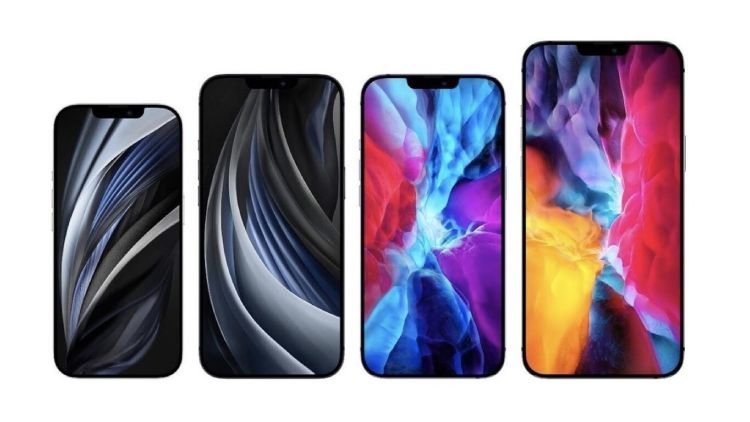
- Price: $729, $829, $999, $1099 respectively
- iOS Version: 14.1 & 14.2
The iPhone 12 release date was October 23, 2020!
Coming to the iPhone 12 series, we had four devices, each covering a different price bracket. With each increment, you would get a larger screen, better cameras, and better battery life. Apple carried forward the same design language as the iPhone 11 series.
- Display: up to 6.7-inch Super Retina XDR OLED panel, 1284×2778 pixels, HDR10, Dolby Vision
- Processor: Apple A14 Bionic (5nm)
- Internals: 6GB RAM, up to 512GB storage
- Main camera: up to 12MP+12MP+12MP+TOF quad sensor
- Selfie camera: dual 12MP+SL 3D sensor
- Battery: up to 3687 mAh, 22W fast charging, 15W wireless charging, MagSafe tech
- Redesigned home screen
- Compact phone calls
- App clips
- Translate app
- App tracking transparency
Apple iPhone 13 Mini, iPhone 13, 13 Pro, 13 Pro Max (September 24, 2021)
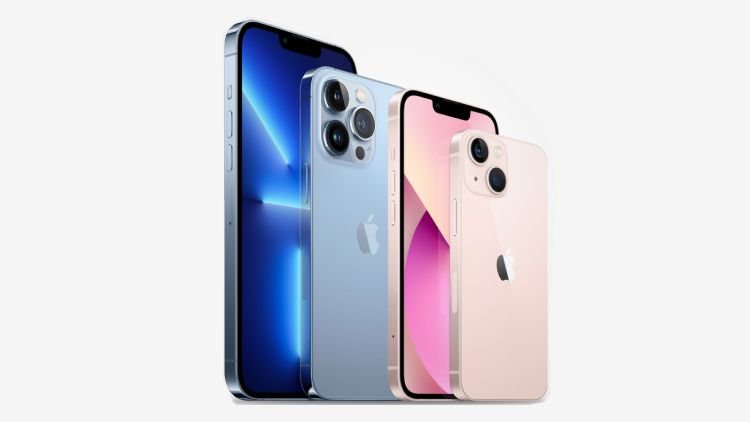
- Price: $699, $799, $999, $1099 respectively
- iOS Version: 15.0
The iPhone 13 release date was September 24, 2021, when the company launched 4 new smartphones!
Apple iPhone 13 series is the company’s latest offering, and it follows the same naming scheme as the iPhone 12 lineup. Once again, there is not much difference between iPhone 12 and 13 series, with only slight improvements. The entire lineup uses the improved and much more powerful Apple A15 Bionic chipset. There are many camera-related enhancements, most of which are software-driven.
The Pro models now offer even better cameras that capture insane levels of detail. The new lineup also has higher refresh rate panels. And that’s pretty much it.
For the limited enhancements, Apple iPhone 13 comes with a relatively higher price tag which is why not many upgraded. Apple iPhone 12 still is quite popular because of its lower price tag.
- Processor: Apple A15 Bionic (5nm)
- Battery: up to 4,352 mAh, 27W fast charging
- Focus Mode
- Facetime SharePlay
- Spotlight
- ID cards in Wallet
- Native app redesign
Apple iPhone SE 2022 (March 8, 2022)
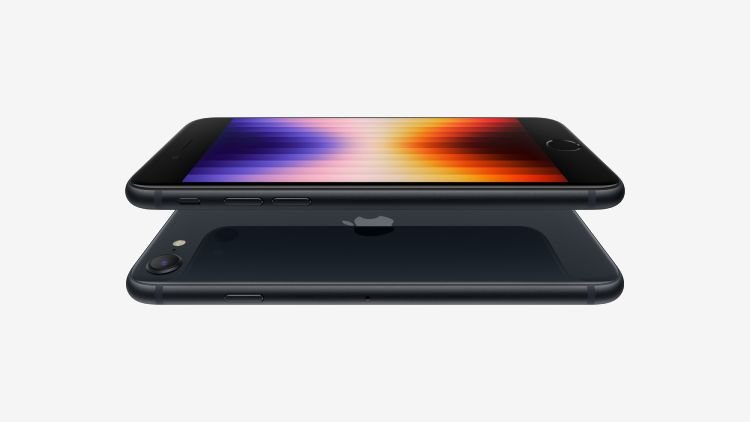
- Price: $429
- iOS Version: 15.4
Once again, Apple decided to revamp its iPhone SE for the third time. We’re now looking at iPhone SE 2022, or iPhone SE (3rd Gen), which has the same design with thick bezels, a home button, and single cameras on both front and rear. Apple upgraded the chipset to Apple A15 Bionic, added 5G connectivity support, and improved the camera system. There’s also wireless charging and better battery life.
Here are the improvements iPhone SE 2022 has over the previous-gen SE device:
- Processor: Apple A15 Bionic (5nm)
- Internals: 4GB RAM, up to 256GB storage
- Battery: 2018 mAh, 20W fast charging, 7.5W wireless charging
Apple iPhone 14 (Expected 2022)
The iPhone 14 release date is expected to be in September 2022!
Apple is now gearing up for the next-gen lineup dubbed iPhone 14 series. It is rumored to have four smartphones: iPhone 14, 14 Pro, 14 Max, and 14 Pro Max. The first two would have a 6.1-inch panel, while the others would have a larger 6.7-inch panel. Apple is expected to bring a new design language that would remove the notch for the greater good. The back of the device might remain similar to previous-gen iPhones.
We can expect improved cameras with insane features such as 8K video recording, 48MP cameras, and much more. Unfortunately, we might see the same A15 Bionic chipset in the lower-end models, while the Pro models might receive A16 treatment. Apple might introduce a more sturdy build quality that would give you a much more premium in-hand feel. Some models might also see improved cooling systems.
Following the previous trend, we’re expecting Apple to launch its new lineup in September, which is just two months away.
Conclusion
With that, it’s time to conclude our comprehensive yet brief look at the latest iPhone models. This listicle gives you a solid understanding of how Apple iPhones have improved over the last decade. It continues to attract more customers, has insane camera capabilities, and improved overall performance.
Considering the current trend, the Apple iPhone series seems to be on the right track and will continue to revolutionize the segment one way or another.

